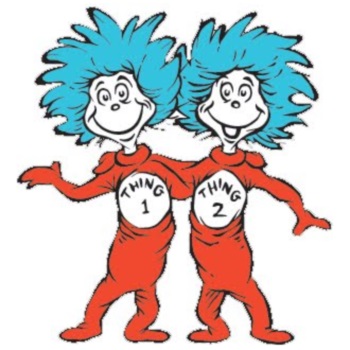-
• #27
Buyers also need to be aware that the previous "Thing" I bought off of this seller has caused me nothing but trouble!

-
• #28
Is this still for sale?
-
• #29
Lots of time wasters tbh. Please only dibs if you are willing to pay by paypal gift straight away without asking "questions" or needing to "see?!?" the item
-
• #30
Bargain! But also on cyclechat, so bugger off, and take your goddamn bargain with you.
-
• #31
Just reading between the lines on your description - is the thing you're selling a 'Lesbian' ? if so Dibs
-
• #32
how would you describe the paint quality? because i had a think just like this stolen
-
• #33
Trade it for this?

It's isotonic...
-
• #34
I assume it'll be sold with a bottle of Coke- as things go with Coke
-
• #35

-
• #36
The interpretations of the thingness of the thing which, predominant in the course of Western thought, have long become self-evident and are now in everyday use, may be reduced to three."
What are the three interpretations?
- A thing is that "around which the properties have assembled." This accords with our current opinion about what things are. There's a sneaky problem with this interpretation of "thingness."
When I say the hammer is blue, I'm saying that I sense blue and that the blue belongs to the hammer. The thing is the union of substance and accident. Hammer is the substance, blue is the accident. All I ever sense is the accident. What is the nature of the substance... the hammer, which I never see, but that is somehow at the core of the blue? We don't know the nature of the subject of the sentence.
For the folks who are irritated that we can't pin-point where the substance of experience is in space and time, we have another interpretation:
A thing is "nothing but the unity of manifold of what is given in the senses. Whether this unity is conceived as sum or as totality or as form alters nothing in the standard character of this thing-concept." Hurrah! The nature of the subject has been sorted out: it's just the sum of sensory data which has moved us "bodily." The external world impresses us physically... sort of constantly pushing and prodding, and the subject of a sentence is a form detected in data. Imagine that you're hearing someone speak Mandarin and you suddenly become fluent... you would then notice form itself.
But "We never really first perceive a throng of sensations, e.g., tones and noises, in the appearance of things--as this thing-concept alleges; rather we hear the storm whistling in the chimney, we hear the three motored plane, we hear the Mercedes in immediate distinction from the Volkswagen. Much closer to us than all sensations are the things themselves....." "Whereas the first interpretation keeps the thing at arm's length from us, as it were, and sets it too far off, the second makes it press too hard upon us. In both interpretations the thing vanishes. It is therefore necessary to avoid the exaggerations of both. The thing itself must be allowed to remain in its self-containment. It must be accepted in its own constancy. This the third interpretation seems to do, which is just as old as the first two."
"That which gives things their constancy and pith but is also at the same time the source of their particular mode of sensuous pressure--colored, resonant, hard, massive-- is the matter in things. In this analysis of the thing as matter (hule), form (morphe) is already coposited. What is constant in a thing, its consistency, lies in the fact that matter stands together with a form. The thing is formed matter."
That doesn't really sound like a very astounding statement: "The thing is formed matter." He's calling attention to the conceptual schema: form-matter, and pointing out the problems that arise from following either side of the scheme to its extreme... which should plop us back to the middle ground: it's one scheme. So as long as you don't have a problem being a pendulum swinging back and forth between the two sides, there no need for getting too excited about things being formed matter. This paragraph is really cool:
"A building, a Greek temple, portrays nothing. It simply stands there in the middle of the rock-cleft valley. The building encloses the figure of the god, and in this concealment lets it stand out into the holy precinct through the open portico. By means of the temple, the god is present in the temple. This presence of the god is in itself the extension and delimination of the precinct as a holy precinct. The temple and its precinct, however, do not fade away into the indefinite. It is the temple-work that first fits together and at the same time gathers around itself the unity of those paths and relations in which birth and death, disaster and blessing, victory and disgrace, endurance and decline acquire the shape of destiny for human being. The all-governing expanse of this open relational context is the world of this historical people. Only from and in this expanse does the nation first return to itself for the fulfillment of its vocation...."
"The temple, in its standing there, first gives to things their look and to men their outlook on themselves. This view remains open as long as the work is a work, as long as the god has not fled from it."
You are selling a Heidggerian abstract concept and I claim endless brain-ache.
- A thing is that "around which the properties have assembled." This accords with our current opinion about what things are. There's a sneaky problem with this interpretation of "thingness."
-
• #37
an Christmas Sale Thing
'a' >>>>>>>>>>>>>>>>>>>>>>>>>>>>>>>>>>>
-
• #38
Does it bar thing?
-
• #39
I'm going to dibs this in 2 1/2 yrs btw.
-
• #40
is adversing things like that legal btw?
'advertising' >>>>>>>>>>>>>>>>>>>>>>>>>>>>>>>
-
• #41
Thing is,
-
• #42
Well, thing.
-
• #43

-
• #44
Help Thing Fill Underpants
-
• #45

can I haz pair
-
• #46
good thread
-
• #47
Lots of time wasters tbh. Please only dibs if you are willing to pay by paypal gift straight away without asking "questions" or needing to "see?!?" the item
Oi, no paypal gift mate. Read the RULES!!!!!!!!!!!!!!!!!!!!!!!!!!!!!!!!!!!!!!!!!!!!!!
-
• #48
could you bring to wests?
-
• #49
^^ Do the rules apply to Things, or only things?
-
• #50

VW 181, sold in the United States as the VW Thing (along with all the other stupid names that they gave 1970s European imports such as the Renault Le Car and Chrysler Cricket)
 BareNecessities
BareNecessities tallsam
tallsam HillyBen
HillyBen Howard
Howard Alkali
Alkali El_Diablo
El_Diablo hippy
hippy TheorySwine
TheorySwine Oliver Schick
Oliver Schick methebmxer
methebmxer sacredhart
sacredhart fatoldbloke
fatoldbloke .gaz.
.gaz. lae
lae
Are you willing to haggle?
[ame="https://www.youtube.com/watch?v=3n3LL338aGA"]Haggle[/ame
]